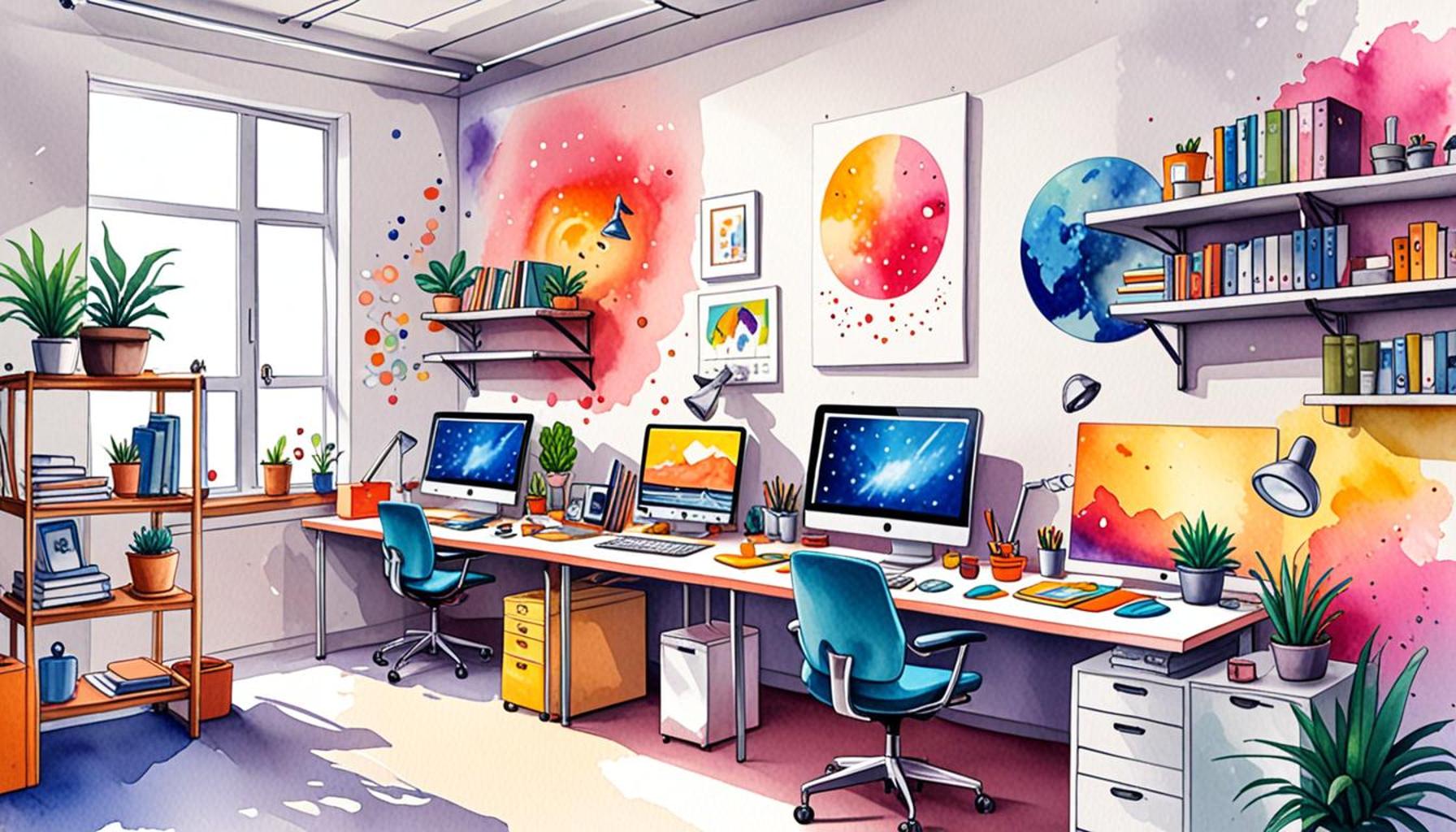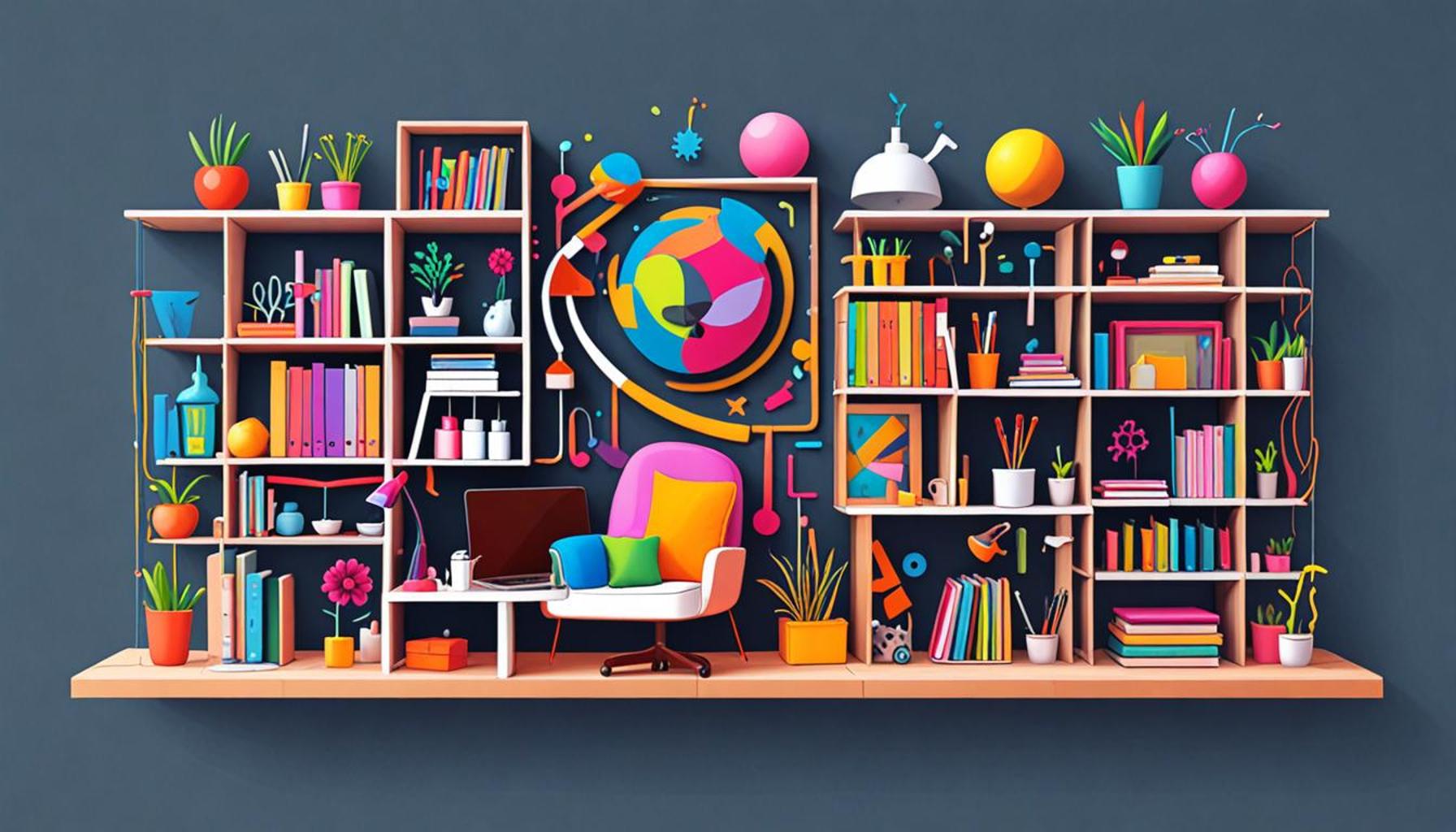The Importance of Multifunctionality in Workspaces: How Space Optimization Can Increase Productivity

The Transformation of Workspaces
As modern workplaces morph to keep pace with changing expectations, the concept of multifunctional spaces has evolved into an essential feature rather than a desirable luxury. The growing trend of remote work combined with the increasing complexity of team projects necessitates environments that are flexible and adaptable. This transformation is not merely superficial; it addresses fundamental needs for improving employee productivity and overall satisfaction.
One of the most profound impacts of workspace optimization is how it addresses contemporary work challenges. The design and function of these spaces can significantly influence how employees interact, collaborate, and engage with their work. Companies are recognizing that the efficient use of space can yield tangible benefits, including:
- Increased adaptability to a multitude of work styles, allowing individuals to choose environments that suit tasks ranging from creative brainstorming to focused deadlines.
- Encouragement of collaboration among team members through thoughtfully designed shared areas that promote communication and idea exchange.
- Improved morale and job satisfaction through aesthetically pleasing and functional environments that foster a sense of ownership and comfort.
Examples of innovation in workspace design can be found in leading firms that prioritize multifunctionality:
- Modular furniture systems enable easy reconfiguration of spaces for diverse needs, whether for team meetings, casual brainstorming sessions, or focused individual tasks. This flexibility is particularly advantageous in hybrid work scenarios, where teams may only partially occupy the office at any given time.
- Shared spaces, such as innovation labs or common lounges, are increasingly integrated into corporate environments, designed specifically to stimulate creativity and spontaneous interactions. Companies like Google and Facebook have pioneered this approach with collaborative hubs that encourage cross-disciplinary engagement.
- Advanced technology—like smart boards and video conferencing tools—facilitates seamless transitions between collaborative and individual work modes. This tech-forward approach is critical in hybrid work models where teams blend in-office and remote participation.
As businesses become more aware of the critical role that space optimization plays in corporate culture, they are actively reconsidering traditional office layouts. Such a proactive approach reflects not only an awareness of the changing nature of work but also serves as a pivotal strategy to enhance overall productivity. Additionally, research shows that companies that invest in employee wellbeing through improved work environments can see as much as a 32% increase in productivity levels.
Thus, adapting workspaces is no longer an option but a necessity for organizations aiming to thrive in today’s competitive landscape. The dialogue around workspace design is expanding, inviting leaders and employees alike to engage in discussions that can influence future trends and innovations.

DISCOVER: Click here to simplify your daily life
The Shift Towards Multifunctional Workspaces
The recent evolution in workplace design has been nothing short of revolutionary. Traditional corporate office setups, often relegated to uniform cubicles and single-occupant offices, have been replaced by more dynamic and multifunctional workspaces. This shift has significantly transformed how team members collaborate, sparking creativity while improving overall productivity. Rather than isolating employees in cubicles, modern office design promotes a holistic approach to working that accommodates various work styles, fostering a culture of cooperation, innovation, and efficiency.
Supporting Diverse Work Styles
Recognizing the varied preferences and working habits of employees, organizations today are investing in diverse workspace designs that cater to specific tasks and modes of collaboration. For example:
- Creative zones: These areas include whiteboards, comfortable seating arrangements, and informal setups where teams can brainstorm and develop innovative ideas without feeling constrained. Such spaces encourage employees to think outside the box and engage in creative experimentation.
- Quiet zones: Equipped with soundproof materials and ergonomic furniture, these dedicated areas are designed for focused work, where employees can immerse themselves in complex projects or tasks without distractions. Studies have shown that uninterrupted work can boost concentration and overall output.
- Collaborative hubs: Integrating advanced technology with open layouts, these spaces are ideal for spontaneous discussions and teamwork. Such environments promote a culture of mentorship and idea sharing, laying the groundwork for groundbreaking developments and synergy across departments.
Breaking Down Organizational Silos
The strategic design of these multifunctional spaces serves not only to enhance productivity but also to dismantle traditional silos within organizations. A prime example is tech giant Apple, which has famously utilized open-plan layouts in its corporate offices. This design choice allows for constant communication and interaction among employees in various departments—a significant factor in driving innovation and collaborative problem-solving.
The Impact on Employee Morale and Retention
Moreover, ample evidence suggests that optimized workspace designs have a notable effect on employee morale and retention rates. According to a survey conducted by the American Society of Interior Designers, workers report being 32% more satisfied when they work in well-designed environments featuring multifunctional spaces. This satisfaction translates into reduced turnover rates, thereby leading businesses to save significant resources associated with recruitment and employee training.
The Role of Nature and Well-Being in Office Design
Another increasingly significant aspect of contemporary workspace design is the integration of nature and well-being features. Companies like Amazon have embraced biophilic design, which incorporates elements such as indoor plants, natural lighting, and organic materials into their workspaces. Research indicates that a connection to nature can alleviate stress levels and boost cognitive function, contributing to heightened productivity among employees.
In a competitive labor market where attracting and retaining top talent is paramount, it becomes evident that the principles of space optimization are central to cultivating a high-performing workforce. Adopting a multifunctional approach in office design is not merely beneficial but essential for fostering environments that enhance productivity while elevating the overall employee experience.
The Role of Flexibility in Modern Work Environments
In contemporary workspaces, flexibility is paramount. Multifunctional areas allow employees to adapt their surroundings according to their tasks, fostering creativity and efficiency. An employee may need a quiet corner for deep focus work, followed by a collaborative space for brainstorming sessions. Such versatility helps prevent stagnation, sparking innovation and driving productivity.Employers must consider incorporating a variety of work setting options such as quiet zones, collaborative hubs, and even informal gathering spots. Research indicates that engaging varied settings can significantly improve job satisfaction among employees. This positive environment creates opportunities for collaboration and a sense of community, essential elements for fostering teamwork and collective problem-solving.
Addition of Technology and Tools
The introduction of technology within these multifunctional spaces should not be overlooked. Integrating smart technology can enhance the optimization of space. For example, utilization of booking systems for shared spaces ensures that resources are effectively allocated, promoting greater usage and reducing wasted time. Furthermore, having technology, such as video conferencing tools, available in all areas empowers teams to work seamlessly, whether they are present physically or connecting remotely.By recognizing the importance of multifunctionality in work environments and leveraging smart systems, organizations can witness a remarkable uplift in productivity and employee engagement levels. It dynamically shifts the focus from rigid working conditions to a more fluid, empowering workplace experience that aligns with modern professional needs. Ultimately, the drive towards a multifunctional workspace should reflect the growing understanding of how space optimization affects employee well-being and performance. The right adjustments could set a company apart in today’s competitive landscape.
DIVE DEEPER: Click here to learn more
The Economic Advantages of Multifunctionality
In addition to enhancing employee satisfaction and collaboration, multifunctional workspaces bring significant economic benefits to organizations. Businesses recognize that optimizing their physical environments can lead to cost savings through efficient resource allocation. A study conducted by Global Workspace Analytics highlights that remote work and flexible office designs can save companies approximately $11,000 per employee per year. These savings stem from reduced overhead costs, including real estate expenses, utility bills, and facility maintenance.
Efficient Use of Space
Flexible workspace solutions encourage companies to minimize wasted square footage. With multifunctional designs, office layouts can adapt to the specific needs of various projects or shifts in workforce size. For instance, activity-based working, which combines quiet, collaborative, and recreational spaces, allows employees to choose their environment based on the task at hand. This adaptability means organizations can operate effectively in smaller locations—significantly reducing real estate costs while still accommodating a diverse range of activities. As a result, many companies are choosing co-working spaces or shared offices, enabling them to maximize efficiencies without sacrificing functionality.
Encouraging Innovation Through Dynamic Environments
The physical characteristics of workspaces directly impact employee behavior and innovation. By providing varied environments, businesses can spark creativity that often leads to new ideas or problem-solving solutions. As highlighted in the Harvard Business Review, workspaces designed with creativity in mind, such as those with flexible seating, movable walls, or even interactive technology, lead to 20% higher levels of collaboration. Companies like WeWork and Spaces have embraced these concepts, designing their facilities to nurture spontaneity and foster a culture where innovation is a shared goal.
The Technology Connection
In conjunction with physical design, technology is a crucial element of modern multifunctional workspaces. Organizations are investing in state-of-the-art communication tools and software to facilitate seamless connectivity among team members, whether they are in the office or working remotely. Video conferencing tools and collaborative platforms like Slack and Trello reduce friction in communication, making it easier for employees to shift between tasks in different environments without losing momentum. Moreover, smart office technology, such as IoT devices, can monitor space utilization and help organizations optimize layouts further based on data analytics.
Inclusivity and Accessibility in Design
One of the fundamental principles of modern workplace design is to foster an inclusive atmosphere where every employee feels valued and heard. Multifunctional workspaces play a vital role in accommodating a diverse workforce, including people with varying abilities and preferences. By incorporating adjustable furniture, accessible routes, and sensory-friendly areas, organizations create environments that empower all employees to contribute fully. This enhanced focus on inclusivity translates to enriched teamwork and innovation, which in turn drives productivity and company growth.
As workplaces continue to evolve, understanding the synergy between multifunctionality, technology, and inclusive design will be essential for any organization seeking to harness the full potential of their workforce. Embracing these concepts not only enhances employee experiences but also positions organizations for sustainable success in today’s competitive landscape.
DIVE DEEPER: Click here to uncover mindful decluttering techniques
Conclusion
In a rapidly evolving professional landscape, the significance of multifunctionality in workspaces cannot be overstated. As organizations strive to enhance productivity, fostering an environment that promotes flexibility, collaboration, and inclusivity has become paramount. This approach not only amplifies employee engagement but also paves the way for innovation and creative problem-solving—essential ingredients for business success.
By adopting space optimization strategies, companies can maximize their physical resources while minimizing costs. The convergence of technology and dynamic workspace designs facilitates seamless communication and collaboration, which are vital components of modern work culture. With the traditional office model evolving, businesses can harness the benefits of co-working spaces and adaptable layouts to meet changing employee needs, ultimately leading to significant savings and enhanced operational efficiency.
Moreover, prioritizing inclusivity in workspace design ensures that all employees feel valued, thus contributing to a more collaborative and innovative atmosphere. This holistic approach not only supports a diverse workforce but also embodies a commitment to employee well-being, driving collective growth and achievement.
As the workforce continues to adapt and change, organizations should recognize that embracing multifunctional workspaces is not merely a trend but a strategic necessity. By doing so, they can position themselves at the forefront of industry innovation, creating an environment where productivity flourishes—ultimately leading to lasting success. To gain deeper insights into optimizing workspaces for future needs, businesses should explore case studies, focus on employee feedback, and continuously adapt their environments to reflect the diverse demands of today’s dynamic workplaces.


